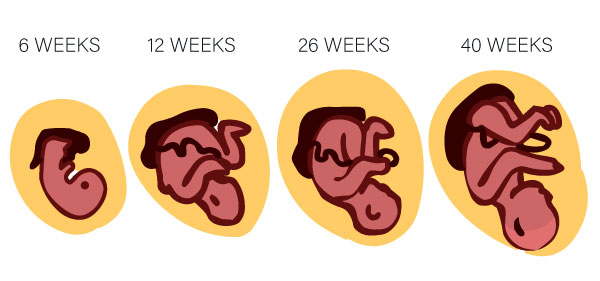- Reproduction
Development stages of the fetus
The embryo becomes a fetus eight weeks after fertilization. The fetus depends upon its mother for protection, oxygen, and nutrients as it develops.
Inside the uterus, there is a bag called the Amnion. The amnion contains amniotic fluid, in which the fetus is surrounded. As the fetus is attached to the walls of the uterus, special tissues at the point of contact become the placenta. From the placenta, an umbilical cord grows to attach the fetus.
Week by week, the fetus grows steadily, and all vital organs such as the spine, heart, brain, lungs, and reproductive organs begin to take shape. Below is an illustration of the stages that the fetus goes through. As the fetus grows into a baby, the mother’s tummy becomes bigger, and bigger, and bigger.
 Boy or girl?
Boy or girl?
A boy or girl is decided at fertilization. This is called the ‘gender’ of the baby. The gender symbol is denoted by the term ‘Chromosome’. Each egg and each sperm have one chromosome. A chromosome can be either X or Y. Egg cells only have an X chromosome. Sperm cells maybe X or Y chromosomes. This means the gender of the child is decided by the man, even though he has no control over what kind of sperm cell to release.
Naturally, a human can only be a boy or girl.
X+X means the cell will develop into a baby girl.
X+Y means that it will develop into a boy.
Whichever gender the fertilization produces, it will end up as a unique, wonderful baby, capable of doing amazing things, just like all of us.
